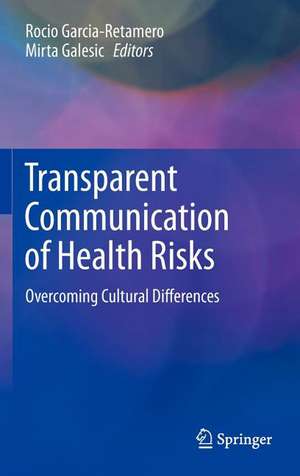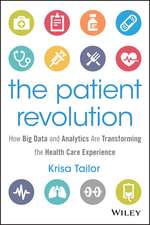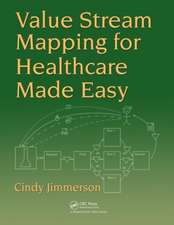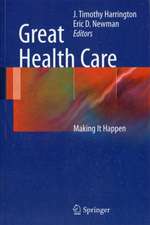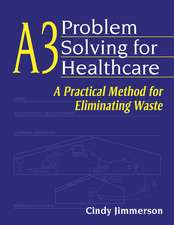Transparent Communication of Health Risks: Overcoming Cultural Differences
Editat de Rocio Garcia-Retamero, Mirta Galesicen Limba Engleză Hardback – 7 ian 2013
Transparent Communication of Health Risks describes a series of cross-cultural studies investigating how people in countries with different medical and educational systems understand numerical and graphical information, what they know about existing medical treatments and screenings, which presentation formats help them better understand the relevant information, and how they use the data to make medical decisions. Focusing on the careful measurement of necessary knowledge and skills, the book also includes validated numeracy and graph literacy scales in English, Spanish, and German. Some of the topics covered in the book are:
- numeracy and graph literacy for health;
- measuring risk comprehension in educated samples;
- communicating information about medical treatment and screening;
- reducing the effect of framed messages about health;
- the effect of individual differences on shared decision making; and
- transparent health information in the media.
| Toate formatele și edițiile | Preț | Express |
|---|---|---|
| Paperback (1) | 1093.52 lei 43-57 zile | |
| Springer – 18 iun 2015 | 1093.52 lei 43-57 zile | |
| Hardback (1) | 1100.64 lei 43-57 zile | |
| Springer – 7 ian 2013 | 1100.64 lei 43-57 zile |
Preț: 1100.64 lei
Preț vechi: 1158.57 lei
-5% Nou
Puncte Express: 1651
Preț estimativ în valută:
210.67€ • 228.92$ • 177.08£
210.67€ • 228.92$ • 177.08£
Carte tipărită la comandă
Livrare economică 21 aprilie-05 mai
Preluare comenzi: 021 569.72.76
Specificații
ISBN-13: 9781461443575
ISBN-10: 1461443571
Pagini: 284
Ilustrații: XIV, 269 p.
Dimensiuni: 155 x 235 x 21 mm
Greutate: 0.58 kg
Ediția:2013
Editura: Springer
Colecția Springer
Locul publicării:New York, NY, United States
ISBN-10: 1461443571
Pagini: 284
Ilustrații: XIV, 269 p.
Dimensiuni: 155 x 235 x 21 mm
Greutate: 0.58 kg
Ediția:2013
Editura: Springer
Colecția Springer
Locul publicării:New York, NY, United States
Public țintă
ResearchCuprins
Chapter 1. Introduction: Transparent Communication in a Globalized World.- Part I: Cultural Differences in the Understanding of Health-Related Risks.- Chapter 2. Statistical Numeracy for Health.- Chapter 3. How to Measure Risk Comprehension in Educated Samples.- Chapter 4. Graph Literacy for Health.- Chapter 5. Public Knowledge of Benefits of Breast and Prostate Cancer Screening.- Chapter 6. Symptom Recognition of Heart Attack and Stroke.- Part II: Transparent Communication of Health-Related Risks Across Cultures.- Chapter 7. Communicating Information About Preventive Medical Treatments and Screenings.- Chapter 8. Helping People Memorize Consequences of Risky Behaviors.- Chapter 9. Improving the Understanding of Treatment Risk Reduction.- Chapter 10. Reducing Denominator Neglect.- Chapter 11. Reducing the Effect of Framed Messages About Health.- Part III: Overcoming Cultural Differences in Decision Making About Health.- Chapter 12. Transparent Health Information in the Media.- Chapter 13. On the Effect of Individual Differences on Shared Decision Making.- Part IV: Conclusions and Appendix.- Chapter 14. Guidelines for Transparent Communication in a Globalized World.- Chapter 15. Numeracy and Graph Literacy Scales.
Recenzii
From the reviews:
“This excellent book discusses health information and health risks with various cultures. … it is most appropriate for higher-level practitioners. … This book is helpful because of the limited information on transparent communication of health-related risks for various cultures. … This book is needed in healthcare and can be a valuable asset in analyzing cultural understanding.” (Ami A. Bhatt, Doody's Book Reviews, April, 2013)
“This excellent book discusses health information and health risks with various cultures. … it is most appropriate for higher-level practitioners. … This book is helpful because of the limited information on transparent communication of health-related risks for various cultures. … This book is needed in healthcare and can be a valuable asset in analyzing cultural understanding.” (Ami A. Bhatt, Doody's Book Reviews, April, 2013)
Notă biografică
Rocio Garcia-Retamero, Ph.D. is an associate professor of experimental psychology at University of Granada. She received a bachelor’s degree in psychology from University of Jaen and a Ph.D. in psychology from the University of Granada with a thesis on decision making a causal learning. Her current research interests involve risk perception and communication, shared decision making, physician trust, medical decision making, group decision making, and learning.
Mirta Galesic, Ph.D. is research scientist at the Center for Adaptive Behavior and Cognition, Max Planck Institute for Human Development. She received a bachelor’s and a Ph.D. in psychology from the University of Zagreb, Croatia, and an M.Sc. in survey methodology from the Joint Program in Survey Methodology at the Universities of Maryland and Michigan. Her current research interests include risk perception and communication, relationship between numeracy and understanding of medical information, and factors affecting medical decision making.
Mirta Galesic, Ph.D. is research scientist at the Center for Adaptive Behavior and Cognition, Max Planck Institute for Human Development. She received a bachelor’s and a Ph.D. in psychology from the University of Zagreb, Croatia, and an M.Sc. in survey methodology from the Joint Program in Survey Methodology at the Universities of Maryland and Michigan. Her current research interests include risk perception and communication, relationship between numeracy and understanding of medical information, and factors affecting medical decision making.
Textul de pe ultima copertă
Recent research in health decision making has shown that many patients, even those with a college education, have difficulties grasping a host of numerical concepts, including percentages and probabilities. Yet, basic numeracy and graph literacy are essential for understanding information relevant to making decisions about health, such as the incidence and prevalence of different diseases, risk reductions from medical screenings and treatments, and risk increases from side effects of treatments and unhealthy behaviors. Patients who have problems understanding such numerical concepts are often prone to errors in risk perception and medical choices. Importantly, informed medical decision making, heavily reinforced these days by the legal requirement for informed consent, depends critically on communication of quantitative medical information. Meeting the challenge of effectively communicating medical information to patients with different levels of numeracy and graph literacy has become more important than ever.
Transparent Communication of Health Risks describes a series of cross-cultural studies investigating how people in countries with different medical and educational systems understand numerical and graphical information, what they know about existing medical treatments and screenings, which presentation formats help them better understand the relevant information, and how they use the data to make medical decisions. Focusing on the careful measurement of necessary knowledge and skills, the book also includes validated numeracy and graph literacy scales in English, Spanish, and German. Some of the topics covered in the book are:
Transparent Communication of Health Risks describes a series of cross-cultural studies investigating how people in countries with different medical and educational systems understand numerical and graphical information, what they know about existing medical treatments and screenings, which presentation formats help them better understand the relevant information, and how they use the data to make medical decisions. Focusing on the careful measurement of necessary knowledge and skills, the book also includes validated numeracy and graph literacy scales in English, Spanish, and German. Some of the topics covered in the book are:
- numeracy and graph literacy for health;
- measuring risk comprehension in educated samples;
- communicating information about medical treatment and screening;
- reducing the effect of framed messages about health;
- the effect of individual differences on shared decision making; and
- transparent health information in the media.
Caracteristici
First book to present between-country comparisons of the total levels of numeracy and graph literacy, and of the effectiveness of risk communication formats in different cultures
Presents findings from rigorous experimental and survey research on national samples in different countries
Includes validated versions of three important health literacy scales: graph literacy, objective numeracy, and subjective numeracy, in their original English and translated into German and Spanish
Presents findings from rigorous experimental and survey research on national samples in different countries
Includes validated versions of three important health literacy scales: graph literacy, objective numeracy, and subjective numeracy, in their original English and translated into German and Spanish
